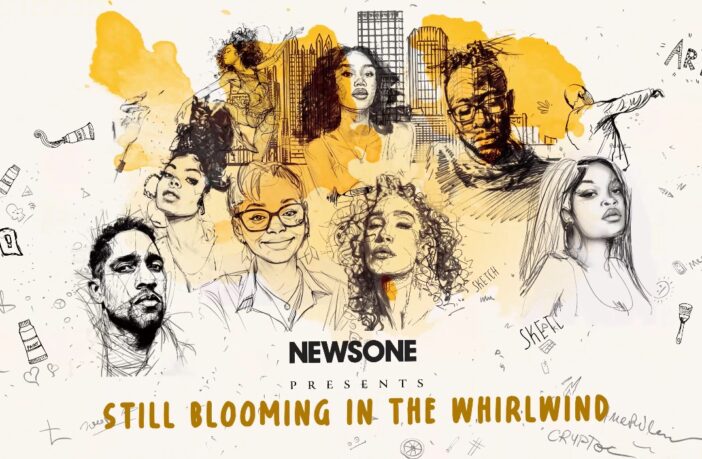Source: iOne Digital Creative Services
Nearly 100 years ago, self-taught photographer Charles, “Teenie” Harris, who was born in 1908, started documenting Pittsburgh’s arts and cultural scene. Today, the Carnegie Museum of Art is home to 70,000 of his images. Many donned the pages of the Pittsburgh Courier at the Black newspaper’s height, beginning in the mid-1930s and continuing through the mid-1970s. Today, a new generation of practitioners is solidifying the reputation of Pittsburgh as a center of Black art. We spoke with artists, scholars, folks working in philanthropy and those building and maintaining Pittsburgh Black arts institutions to gain insight into this ongoing legacy.
Like most artists in Pittsburgh’s Black cultural arts community, Morgan Overton wears many occupational hats simultaneously. She is an artist-in-residence at the University of Pittsburgh Frederick Honors College. Overton is also the workforce director for CREATE PA: Pittsburgh Film and Theater Works.
Her portraiture paintings, such as “Justice for Antwon,” emphasize the fortitude of Black Americans. Her 2019 watercolor painting “Justice for Antwon” captures the “humanity and spirit” of Antwon Rose II, a 17-year-old Black American fatally gunned down by an East Pittsburgh police officer a year earlier.
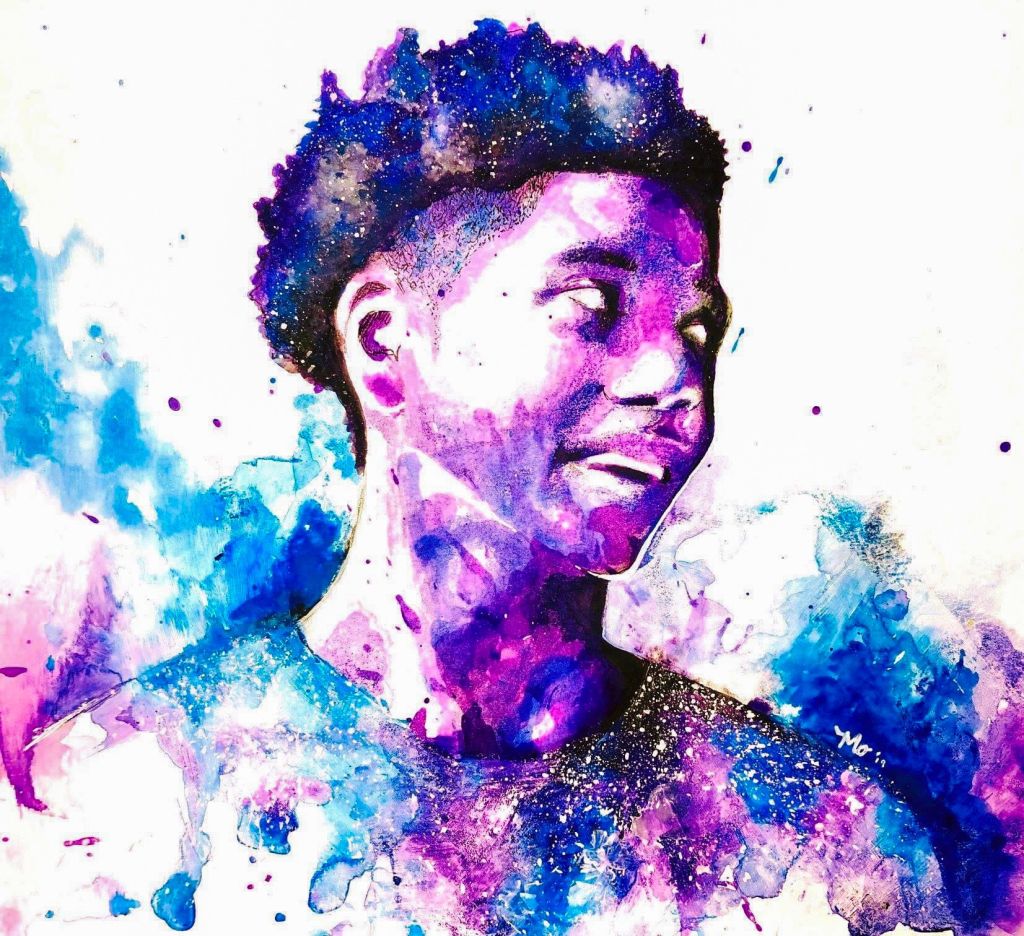
Source: Morgan Overton
When asked about the current state of the Black cultural arts community in Pittsburgh, Morgan’s response synthesizes the past, present and future. “I think it is important to consider the historical context of Pittsburgh and its art scene,” Morgan says. “One prime example is our neighborhood of the Hill District—which was the mecca for lively arts, jazz, creativity and bustling Black-owned businesses from the 1930s to 1950s.”
“Pittsburgh tends to be siloed,” she continues. “That contributes to a lack of real solidarity in fostering a sense of an art community, especially a Black art community. I have this discussion with many Black artists, and they share the same concerns—not feeling seen, valued and having to work twice as hard to get exposure, funding or business. Despite all this, Pittsburgh is in a window of opportunity where many organizations are realizing the value of the arts, especially as we emerge from the pandemic. These organizations are opening up more opportunities for artists to contribute and leverage their work.”
Mark Whittaker is a Pittsburgh native and former editor of Newsweek. His book, Smoketown: The Untold Story of the Other Great Black Renaissance, chronicles the achievements of Pittsburgh’s Black American community in the arts, journalism, sports, business and entertainment from the 1920s to 1950s. He classifies this period as a renaissance on par, if not exceeding, the Harlem Renaissance and those that occurred throughout Europe.
“The result was a Black version of the story of the 15th-century Florence and the early 20th-century Vienna: a miraculous flowering of social and cultural achievements all at once,” Whittaker writes.
New wave gains national acclaim
As for “the window of opportunity” that Morgan points to, the artist vanessa german (she spells her name with lower case letters) and fiction writer Deesha Philyaw are two standout examples of Black artists whose work have garnered regional and national acclaim when they were living in Pittsburgh.
In 2022, german won the $250,000 Heinz Award for the Arts and the $200,000 Don Tyson Prize administered by the Crystal Bridges Museum in Arkansas in 2018.
Philyaw won the 2022 Pen/Faulkner Award for Fiction for her short story collection, The Secret Lives of Church Ladies, which tells the story of four generations of Black women confronting desire and the Black Church’s double standards. The book is being adapted for a television series by HBO Max and, according to the Hollywood Reporter, Philyaw signed a seven-figure, two-novel deal with Mariner Books.
She is one of two Black American writers from Pittsburgh to win the Pen/Faulkner Award for Fiction, one of the nation’s most prestigious book awards. The other is John Edgar Wideman. He won the award twice for his novels, Sent For You Yesterday, in 1984, and Philadelphia Fire in 1990.
In 2020, Damon Young, Pittsburgh native writer, editor and co-founder of VerySmartBrothers.com, won the 20th Thurber Prize for American Humor for his book What Doesn’t Kill You Makes You Blacker.
Three Black American women from Pittsburgh were awarded Guggenheim Fellowships in 2022: the historian Keisha Blain, poet Yona Harvey, and visual artist Alisha Wormsley, who garnered international attention in 2018 for her “There are Black People in the Future” billboard in East Liberty. Wormsley coined the phrase seven years earlier.
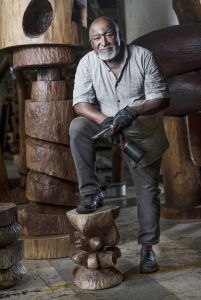
Thaddeus Mosley. | Source: Nate Guidry Photography
The sculptor, Thaddeus Mosley, whose work has been gaining long overdue international attention since he joined New York City’s Karma Gallery in 2019, has been active on the local arts scene since the 1950s. At 98, Mosley has witnessed a lot of history in Pittsburgh’s Black American artist community. He counts among his friends the great sculptor Richard Hunt and the sculptor and abstract painter Sam Gilliam, who taught painting as a professor of art at Carnegie Mellon University in the 1980s.
Within the Black American art scene in Pittsburgh, Mosley highlights the contributions of Black women artists. He cites the group Women of Visions, a collective of visual artists. “They’ve been together for a long time as a Black women’s group, and they mainly show locally,” Mosley says.
Mosley also talked excitedly about the work of Kilolo Luckett, who has been in the field of arts administration and production for decades. She is a Black American woman who is a curator, art historian and founding executive director and chief curator of ALMA/LEWIS, a cultural hub and resource for Black creativity, public programs, archiving artist residencies and exhibitions.
Pittsburgh Black Arts past and present
The lineage and evolution of Pittsburgh’s Black American arts community represents the historical ebbs of artists and organizations constantly working and creating art. University of Pittsburgh history professor Laurence Glasco points to developments in the Black Pittsburgh arts community beginning in the 1960s to present day. “There’s a resurgence, but it’s not where it was. I mean it hasn’t gotten any place near to where it was back in the 60s,” Glasco says.
The 1960s was a period when Black nationalism influenced the creation of the Black Arts Movement (BAM). The ideological concepts of BAM led to the development of theater companies in Pittsburgh, such as the Black Horizons Theater founded by Rob Penny and August Wilson in 1968 and the Kuntu Repertory Theater founded by Vernell Lillie in 1974.
“I have looked at the art scene in Pittsburgh over the decades,” says Glasco, author of the forthcoming book The Power of Place: August Wilson and Pittsburgh. “They’re trying to revive it. When August Wilson was there, it was a very thriving scene. There were lots of artists, musicians, poets and playwrights who had talent and were very active in the 1960s.”
These days, a dance ensemble, art gallery and theater have set up shop, so to speak, in the once-fabled Hill District, Glasco adds. He cites the Pittsburgh Playwrights Theatre Company, founded by Mark Clayton Southers, as one example of the incremental resurgence taking place in the Black American arts community in the Hill District.
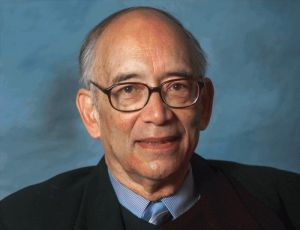
Laurence Glasco. | Source: University of Pittsburgh
Southers is a Pittsburgh native and playwright, poet, actor, cultural arts administrator, director and theater owner. August Wilson was his mentor. He was interviewed by the former Boston Globe journalist Patti Hartigan for her recent 2023 biography: August Wilson: A Life.
In 2020, Southers and his wife, Neicy Southers, purchased Madison Elementary School in the Upper Hill section of Pittsburgh with an eye on renovating it as a symbol of intellectual and artistic excellence. The school was known for its high achievement in the 1970s, but it was later abandoned for 17 years. Southers attended Madison as a child. The husband-and-wife team renamed the school the Madison Arts Center, and their theater company, the Pittsburgh Playwrights Theatre Company, is the anchor tenant.
This represents what Mark Southers calls “the brick and mortar” phenomenon taking place in the Pittsburgh Black arts community: an uptick in Black Americans owning art establishments. Southers rattles off the names of arts organizations such as Moka Art Gallery, The Hill Dance Academy Theater, and ACH Pathways Kaufman Center in the Hill District as proof.
Furthermore, Southers believes that the murder of George Floyd in 2020 by Minneapolis police officer Derek Chauvin caused a significant increase in philanthropy to Black American artists and organizations. “I think post-George Floyd there has been an awakening within the white community and stakeholders in traditional theater. And not just theater, but in the arts period,” Southers says.
“And so those people behind closed doors who have the power to make change started making change, started being more inclusive, started listening more, and started putting people of color in a position to make decisions. And that’s the renaissance that we’re going through [today].”
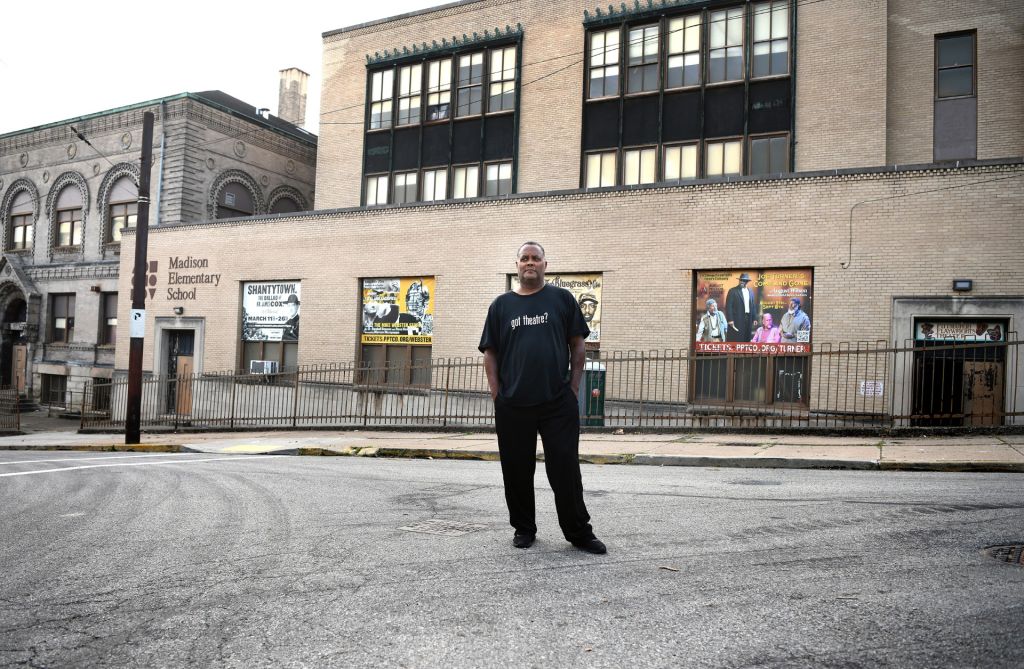
Mark Southers. | Source: Nate Guidry Photography
Creating amid day-to-day financial realities
Unquestionably, philanthropy plays a role, however, historically circumscribed in the Pittsburgh Black American arts community. Shaunda Miles McDill is the managing director of the Pittsburgh Public Arts Theater. Prior to this role, she was a senior program officer for arts and culture at the Heinz Endowments. As an adjunct professor at Carnegie Mellon, she teaches a course called “Arts and Community Development.”
McDill is also the founder of the Demaskus Theater Collective and an actress. She played the role of Bertha in August Wilson’s Play, Joe Turner’s Come and Gone, at Pittsburgh Playwrights Theatre Company in 2023. Her two decades of experience in cultural arts administration sheds light on the thorny and complicated issue of funding Black American artists and organizations in Pittsburgh and elsewhere.
“I look at a renaissance or resurgence over time—the Harlem Renaissance, all these different things,” McDill explains. “And what happens, often, is there’s an infusion of cash or some sort of economic boom. And then you see artists emerge.”
While we often hear about the majesty of August Wilson’s plays, McDill recounts how Wilson spoke candidly about the financial reality of being a playwright and getting a play produced. “You know, one of the things that he talked about was the part of power that has to do with how theater is financed and governed,” McDill explains. “You can’t ignore the kind of investment by MacKenzie Scott in recent years, or the investment by the Ford Foundation.”
The Heinz Endowments and Ford Foundation funded Pittsburgh’s Cultural Treasures and has distributed close to $9 million in three phases, beginning in 2021 through 2023, to Black American-led cultural organizations. Since 2019, MacKenzie Scott has given away over $14 billion to nonprofit service and arts organizations nationally, including millions in Pittsburgh.
The current state of the Black arts community in Pittsburgh—what one sees and from where—is a view from the community level or the skyboxes of philanthropic organizations. In between all of this are artists and organizations faced, inevitably, with the day-to-day realities of recognition and financial survival.

Morgan Overton. | Source: Morgan Overton
This is borne out by Sean Beauford, a curator, writer, adjunct professor of art at Carnegie Melon University, a community engagement specialist at Duolingo and the former manager of community relations at the Carnegie Museum of Art.
“There is a kind of emergence of support that’s made things different. And so, there’s a way that a lot of these artists contributing and making noise at the national level will get press for Pittsburgh. That contribution makes the arts look good, but I don’t think that’s filtering back into the support of the arts community and providing sustainable measures for artists to stay here and work here.”
The celebrated Pittsburgh interdisciplinary artist, Alisha Wormsley, who has won her share of accolades and awards, agrees.
“There have been artists in Pittsburgh forever,” explains Wormsley, an assistant professor at Carnegie Mellon, who teaches a course about social practice and art. “But I do think there is attention (and resources) being given more to artists in Pittsburgh, Black artists in Pittsburgh specifically, that wasn’t [happening]before.”
Still, Morgan Overton, who also wears a community activist hat, says, “I think there is a slow, but certain realization that in addition to opportunity, we must also make social factors such as affordable housing, livable income and accessibility a reality, too.”
“The more we do this, the more we normalize the arts as a real career path that doesn’t have to exist in struggle. Artists can thrive and are an integral part of the Pittsburgh community.”
Hakim Hasan is a writer whose work has appeared in Black Renaissance Noire, The New York Times Magazine, The Washington Post and the San Francisco Chronicle.
NewsOne Presents Still Blooming In The Whirlwind: Pittsburgh As A Black Cultural And Artistic Mecca
SEE ALSO:
Black Artists + Designers Guild Celebrates The Artistry Of Black Creators
Princeton Program Aims To Increase Black Leadership In Art
10 photos
